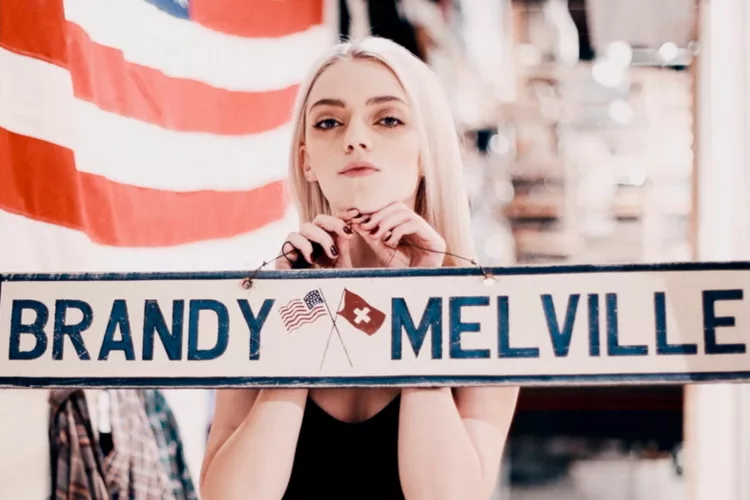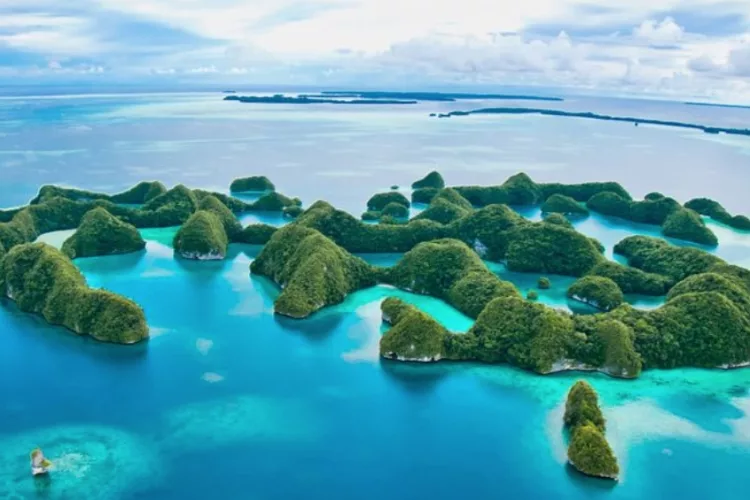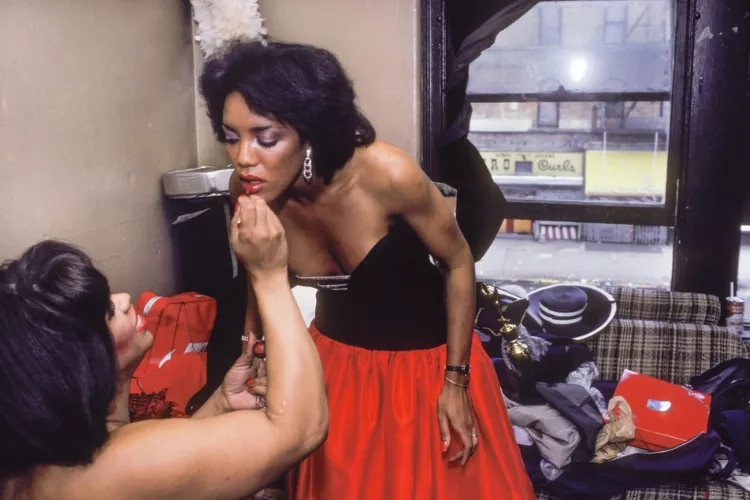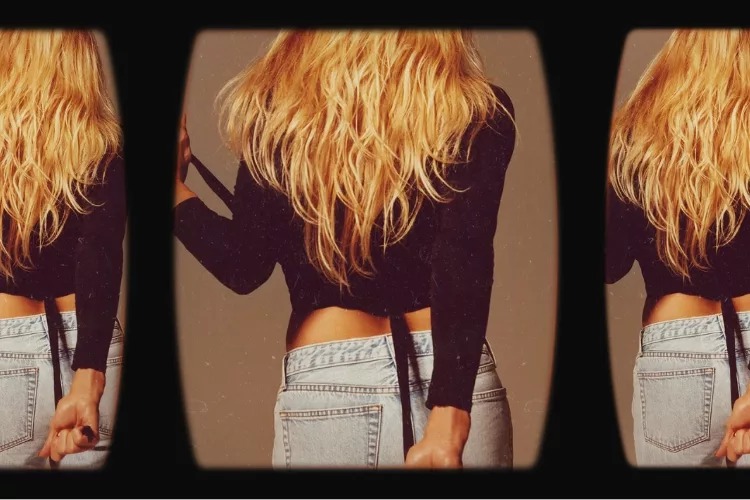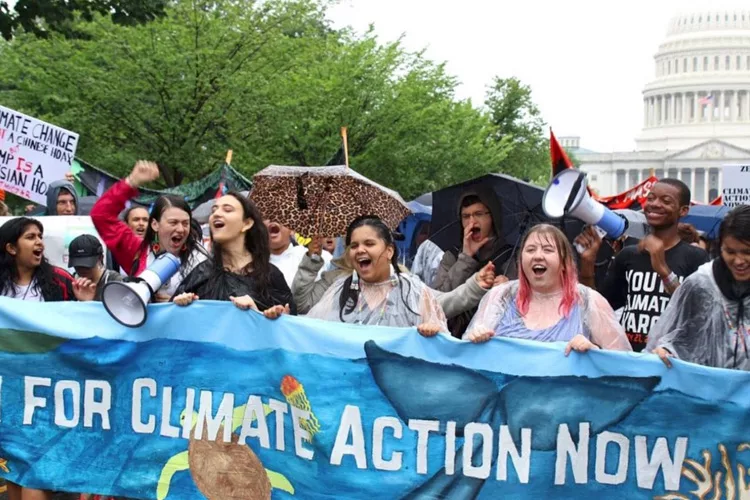Instagram might be best known as our default destination for killing time. But to Nergiz De Baere, it can be an effective tool for disseminating knowledge about tough topics, like global warming and feminism. With her account Chicks For Climate, the young UK activist is tackling the twin banes of our society, one Instagram post at a time.
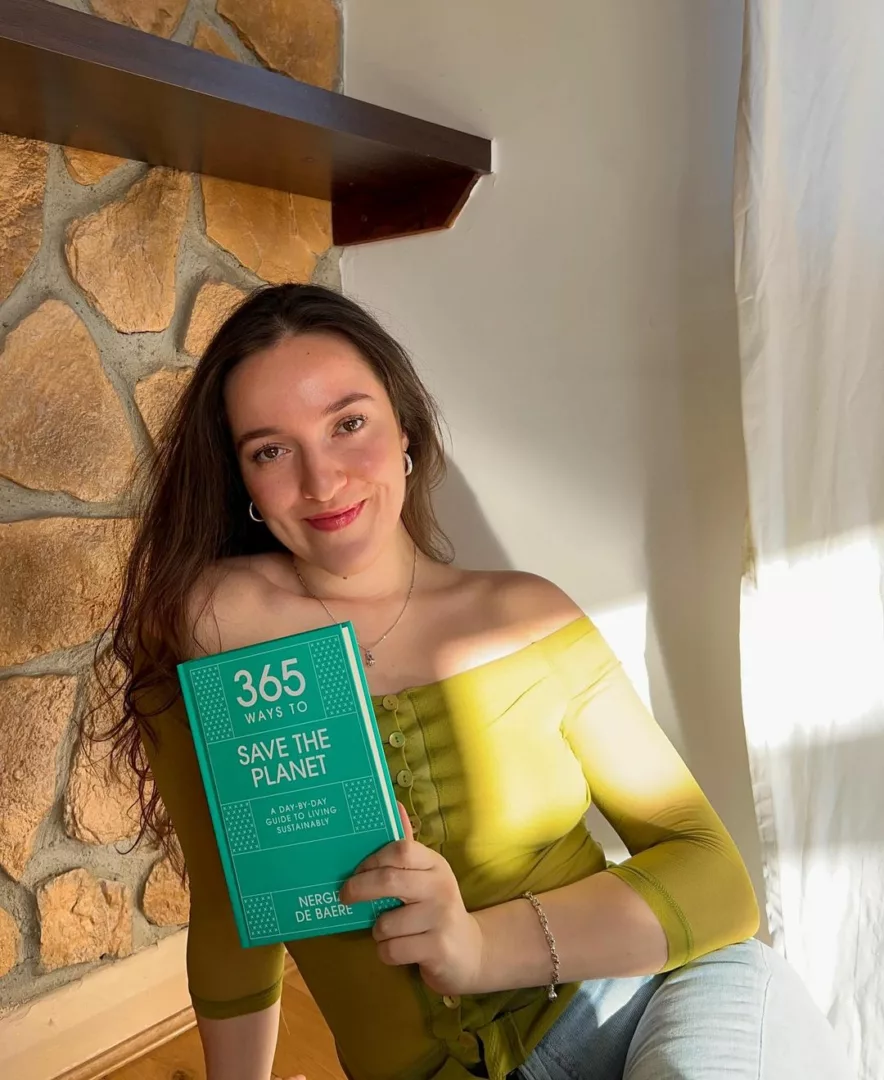
Imagine getting the most up-to-date info about climate + feminism in one online hub. No subscription fees, no annoying cookies allowance requests. Displayed in Instagram signature square collage, each carousel gives you some serious, unfiltered thoughts about pressing issues. All are wrapped in eye-catching contemporary graphics. Chicks For Climate is anything but traditional political activism.
Nergiz is not afraid of being provocative. Scroll through the page and you’ll find posts like “Having a billionaire is a sign of a failed society” printed in bold. This formula works well for Nergiz: the site has amassed some 400k followers. In fact, Nergiz’s unapologetic tone is part of the page’s appeal. Created after her own experience with eco-anxiety, Chicks For Climate has become a place where she has ultimate freedom to own her views on ecological and gender issues. Nergiz alternates between the hopeless and the hopeful sides of controversial topics, and especially attacks the notion that we should accept everything given to us. Especially because the “facts” are controlled by a selected few.
Nergiz considers herself an imperfect activist who talks about love and optimism first, climate crisis and anti-capitalism later. Aside from managing Chicks For Climate, Nergiz is also running a hemp underwear business, magi, and is the author of a book about how one can lead a sustainable lifestyle on a daily basis, called “365 ways to save the planet”.
NKM/Jacqueline: Your IG page Chicks for Climate educates people about feminism and environmentalism. How do you combine these two political issues and keep it light-hearted and fun?
Nergiz: I think Instagram is a platform that rewards simple, beautiful imagery, and that was really the tool I used to communicate these concepts in a way that was engaging and fun. I didn’t know anything about graphic design, but I knew my audience and I knew what people wanted to see on Instagram. Feminism and environmentalism are deeply intertwined, because the climate crisis is deeply rooted in the patriarchy and other oppressive systems. These topics are definitely not light-hearted, but the IG page is all about breaking it down to make it shareable and easy to understand.
Where did you get the initial ideas for Chicks for Climate?
I honestly started the page out of pure eco-anxiety over the state the world was in. it was after a hot day in February 2019 in London and I just couldn’t shake the feeling that something is very wrong and no one was doing anything about it. This was around the time Greta Thunberg was becoming a household name – I started to notice that a lot of climate activists were women, and the only people in my life who seemed to talk about climate change were other women. Climate change also affects women more. So I knew I wanted to create a platform that combined feminism and climate change.
Chicks for Climate now has nearly 400k followers on IG. How did that happen?
The pandemic played a huge part in the explosion of the page – I didn’t expect it at all! I think what we were sharing during that time when everyone was at home really resonated. Because I’m really passionate about this subject it was easy for me to stay consistent and post every day. Consistency is key.
How does your degree in Economics contribute to the way you are doing eco-conscious fashion and social activism right now?
I took a few classes at university that really shaped the work I do today – my favourites were the Economics of Gender and the Economics of Inequality and Poverty. These classes really showed me how systemic the problems of inequality are, and just how much human behaviour is interconnected. For example, I learned that rates of domestic violence in certain places go up when a sports team loses a game.
The climate crisis is the culmination of all the injustice in the world, and that’s something I learned through my degree. There are also certain things I am unlearning. For example, modern economics is based on an assumption of scarcity. I don’t believe resources are scarce, I think they’ve been allowed to be hoarded by a select few. Economics allowed me to learn the rules of our current system, and you have to know the system to be able to change it.
One of your goals is to bring love and empathy into the sustainability conversation. Can you specify what that would look like?
Our societies are built on domination and hierarchy – being human, being born male, white, heterosexual, rich, able-bodied, in the West, etc. gives you the power to dominate others. Having any other identity gives you less power and less ease in your way of life. This way of constructing society leads to violence and abuse in many forms – towards nature, women, people of colour, queer people, disabled people, people not born in the West, etc.
Violence and abuse of any kind signify a lack of love. I learned this from bell hooks in her book All About Love. I started to think about what the world would look like if we incorporated love into our systems. Love is about extending yourself to help someone or something else grow.
Love is literally the solution to all our problems on this planet. Imagine if we loved nature, instead of exploiting it? Imagine if we wrote immigration laws, drew up school curriculums, and built infrastructure and roads, from a place of love? It can happen. We just need to believe it can. A lot of people would scoff, which is what I’m working on trying to change.
Styles, trends and empathy: Can they co-exist or one has to sacrifice?
That’s a really interesting question. Let’s break it down:
Style is something you hone, that reflects your authentic self.
Trends reflect the cultural attitudes and tastes of a certain time period, but they are also orchestrated by certain industries to get us to buy more things.
Empathy is the ability to understand and share feelings with another (the people who make our clothes, or the ecosystems that feed our clothing addictions).
It’s all about what we place value on in our society. If we all had more empathy, and if our systems were built with empathy in mind, trends probably wouldn’t be as important as they are now. The survival of our ecosystems would take precedent. I don’t think it’s about sacrificing, but about balance. At the moment, there’s way too much emphasis on trends and style, and nowhere near enough empathy.
What made you decide to write your book “365 ways to save the planet”? How did that happen?”
The publisher reached out to me with this book idea and they needed someone to write it. I learned so much writing about climate change for a few years on Instagram, and the publisher liked my accessible writing style. I’m really grateful for the opportunity, and I’m proud of myself for having written it. I told the publisher from the beginning that this was not going to be a typical book about sustainability that would make people feel guilty. It’s a hopeful handbook to help the reader be the best advocate for the planet they can be.
Can you share one of your favorite (of the 365) ways with our readers?
The Case for Hope
Hope is a special feeling that can only be described as the belief that everything will turn out okay, no matter how hard present circumstances might be.
The ability to have hope about complicated matters like climate change is uniquely human, which makes it uniquely powerful.
It is when we’re armed with hope that we can continue on fighting for justice, even when the prospects seem bleak. It is when we remember those who persevered, sacrificed, and fought before us – civil rights leaders in the US, Indigenous Peoples from the Achuar people in Peru to the Dayak people in Borneo, the women of the Chipko movement, to name only a few – that we are given the motivation to continue on.
In the case of the climate crisis, many are waking up to the reality of the unjust system that has allowed corporations to exploit people and the planet for so long.
Young millennials and members of Gen Z are more politically engaged than any other generation. These young people are now growing into adults and getting their foothold in the world, and I am certain their influence will bring change.
We can also find hope when we look inwards. There are people like you who deeply care and want to make a difference, enough to pick up this book and learn how. We must never forget about ourselves and the power we each have to make a difference. The exploitative system we live in thrives when we lose hope and faith in ourselves and our communities.
There are plenty of reasons to have hope in the coming years. Personally, what gives me immense hope is the hundreds of people who make up the worldwide community of activists who are working tirelessly everyday to spread awareness and education.
Think about what gives you hope, write it down and use it as your power and strength, as a reminder during the tough times that inevitably lie ahead.
You were working for a company that sells financial apps before Magi. What inspired you to start your own underwear brand?
The idea for starting my own underwear brand was born out of a need I have myself. I knew from my Instagram page how bad cotton is for the environment, and I’ve been told by gynecologists for years to wear cotton. I’d been suffering from yeast infections and I wanted to find a better alternative to cotton for my underwear. I started to research other fabrics and found hemp. Hemp is not only way better for the environment than cotton, but it’s more breathable and it’s antifungal. It’s truly a miracle fabric. I was inspired to start a brand that would serve the needs of someone like me –as the only hemp underwear brands I could find weren’t the cutest.
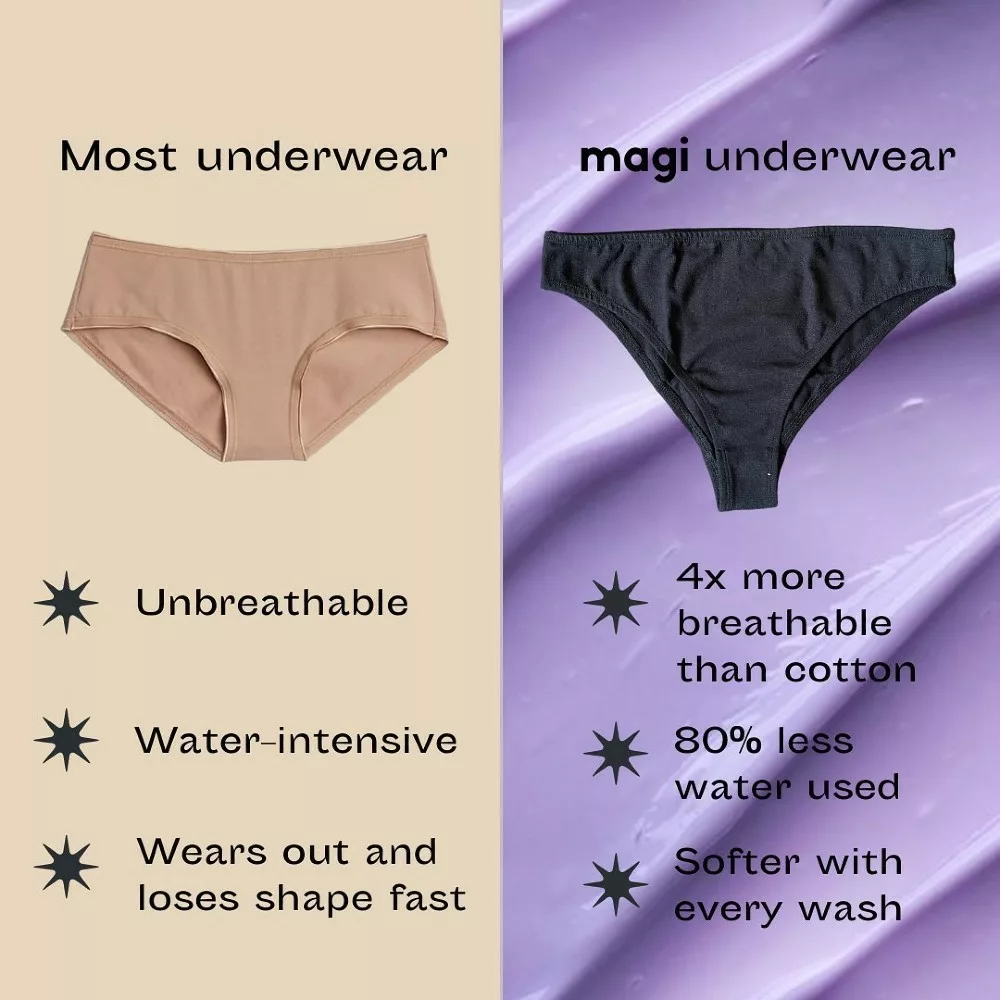
Your underwear brand Magi is “making hemp cool again”. Why hemp but not other materials?
Hemp used to be humanity’s main fabric. We used it for everything from clothing to paper to rope. It’s extremely strong and durable and it’s easy to grow. When the hemp plant was outlawed in the early 20th century, the cotton and petroleum industries were behind it. They were intimidated by the superiority of hemp and in the US, they used racist messaging to get the public’s support to outlaw it.
It’s such a shame because we could have saved so much water and so many emissions if hemp had been as popular as cotton is today. It needs 80% less water than cotton to grow. It’s carbon negative and sucks up 4x more carbon than trees for the same area. It gets softer with each wash. I mean it’s really an incredible plant.
Your advice to a young social activist?
No one knows what they’re doing. It might seem like everything that exists in the world exists because someone really knowledgeable or capable thought it through, but that’s not the case. Everything is always subject to change, and there’s no reason to be intimidated by the world. No one knows the right way to do anything, even if they appear to know. So keep going, keep learning, and don’t lose hope.
–Jacqueline Pham
Related Articles

